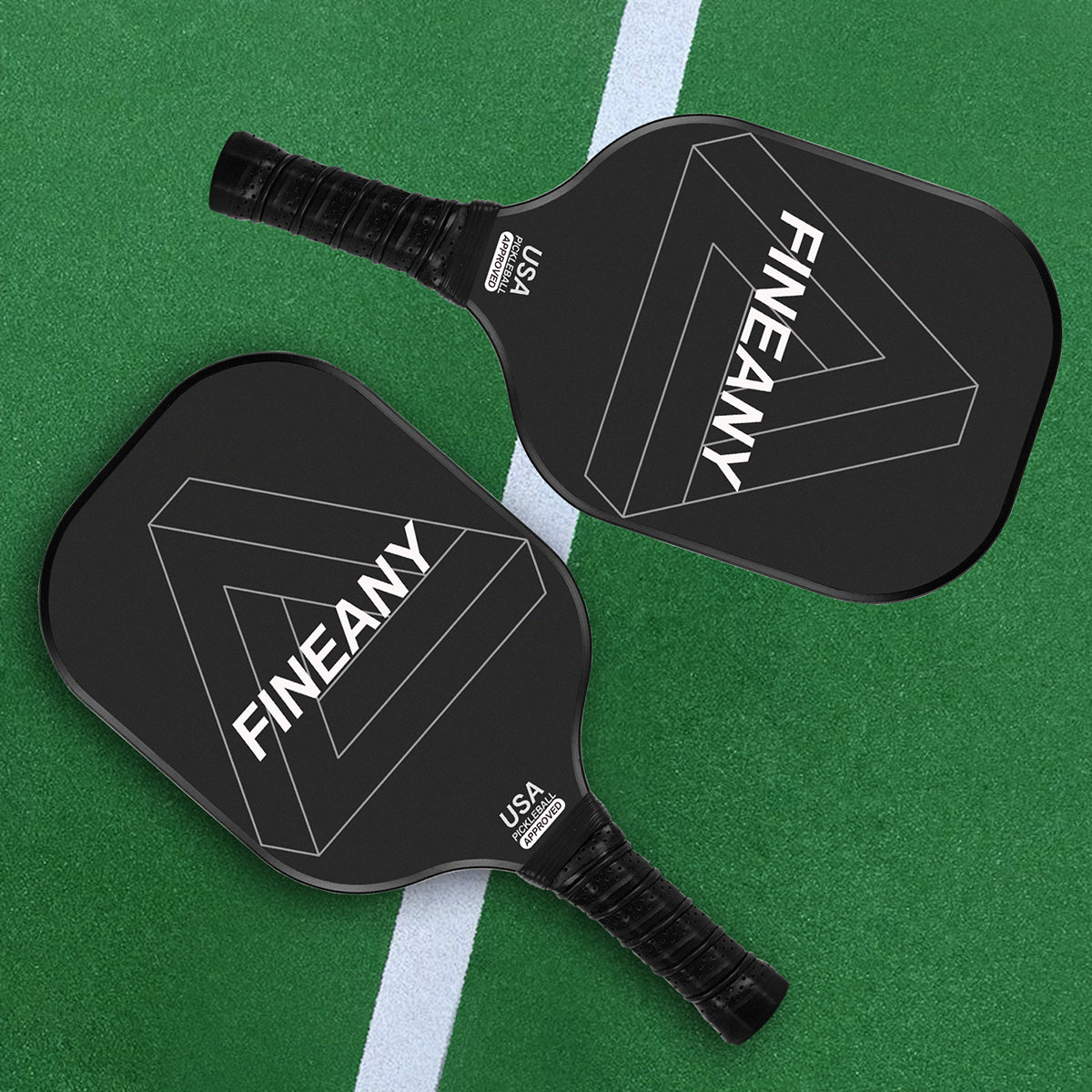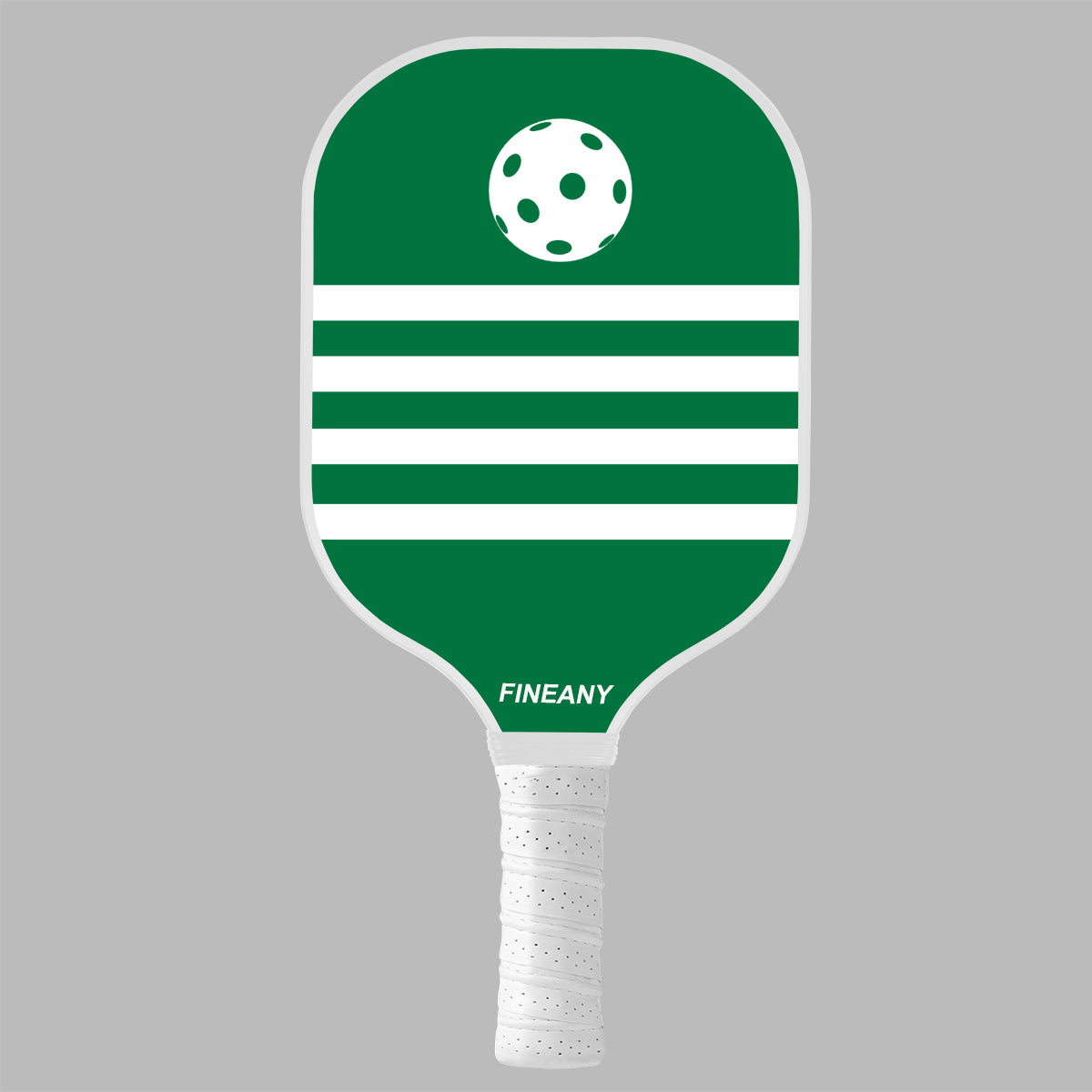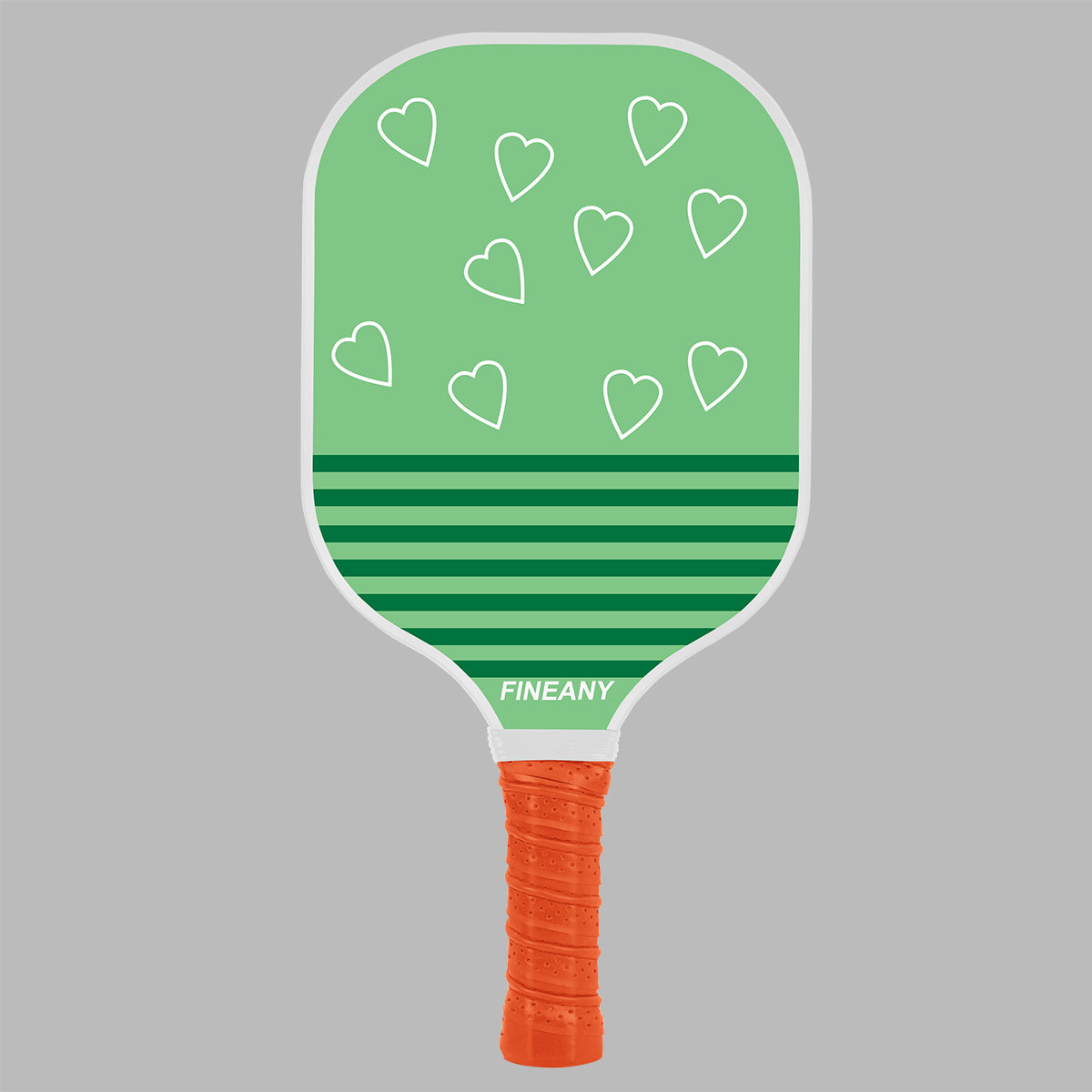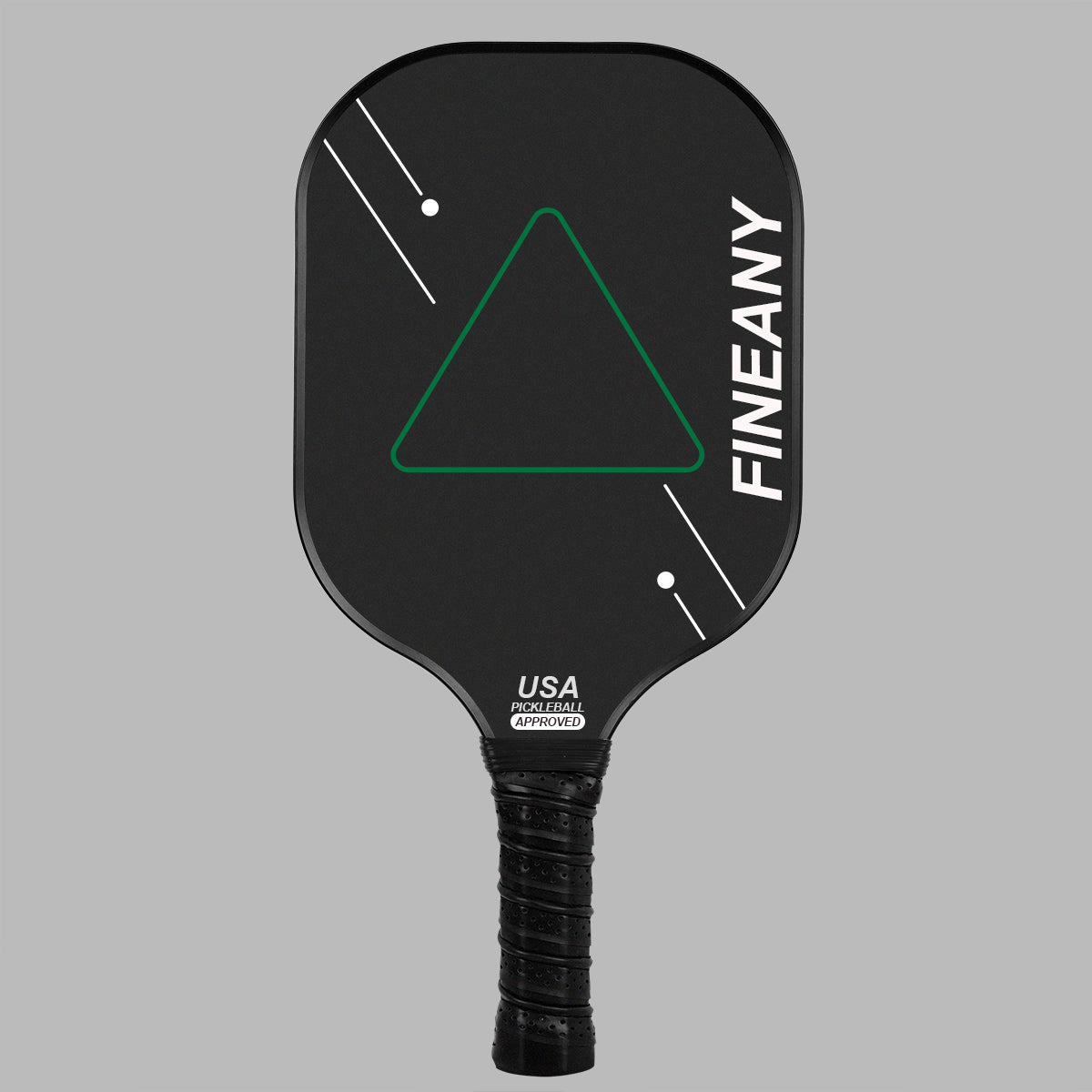Introduction to Pickleball paddles materials
Pickleball paddles are made from a variety of materials, each of which has a unique impact on the overall performance, durability and feel of the paddle. The choice of material can greatly affect a player's game, impacting areas such as control, power, comfort and even injury prevention. Understanding these materials is essential for any player looking to improve their game, as it can help them choose the best racquet for their style of play and needs.
The materials used in Pickleball paddles can be broadly categorized into core and surface materials. Core materials usually include polymers, Nomex honeycomb and aluminum, each of which offers different advantages in terms of weight, durability and performance. Surface materials, on the other hand, include carbon fiber, fiberglass, and Kevlar, which contribute to the strength, flexibility, and impact resistance of the racquet.
Choosing the right combination of core and surface materials can have a significant impact on the feel and performance of a racquet. For example, a racquet with a polymer core and carbon fiber surface may offer an excellent balance of power and control, while a racquet with a Nomex core and Kevlar surface may offer excellent durability and shock absorption.
In this comprehensive guide, we'll dive into the most commonly used materials in Pickleball paddles, exploring their unique benefits and how they can enhance the playing experience. By understanding these materials, players can make an informed decision when choosing a paddle, ensuring it matches their playing style and needs. Whether you're a beginner looking for a forgiving racquet or an advanced player seeking optimal performance, the right material can help you reach your full potential on the court.
Technological advances and a deeper understanding of player needs have driven the evolution of Pickleball paddles materials. Early paddles were typically made of wood, which was durable and affordable, but heavy and limited in performance. However, modern paddles utilize advanced composites and manufacturing techniques to create lightweight, high-performance paddles that can significantly improve a player's game.
In exploring the various materials used in Pickleball paddles, we will examine their individual properties, their uses in paddle construction, and which type of player they are best suited for. This knowledge will provide you with the information you need to choose a paddle that not only feels comfortable in your hand, but also complements your playing style, helping you play better and enjoy your game more.
carbon fiber in pickleball paddles
Benefits of Carbon Fiber
Known for its excellent strength and stiffness, carbon fiber is a popular choice for high-performance Pickleball paddles. This material is made from fine carbon fibers that are woven together and then bonded with resin to create a lightweight but extremely strong composite material. Ultimately, the paddles provide players with enhanced control and power for more accurate and powerful shots. Carbon fiber racquets also have a sleek, modern look that many players love.
Durability and Performance
Racquets made of carbon fiber are not only lightweight but also very durable. They can withstand intense play and are more resistant to wear and tear than many other materials. This durability ensures that players can rely on their racquets to perform consistently over time. Additionally, carbon fiber racquets tend to have a very consistent feel, providing players with predictable and reliable feedback on every shot. This consistency is especially important for advanced players who rely on precision in their game.
Comparison to other materials
Compared to other materials such as fiberglass or wood, carbon fiber stands out for its excellent strength-to-weight ratio. While it may be more expensive, the investment often pays off in terms of performance and longevity, making it the preferred choice for serious players. Fiberglass, for example, is less expensive but does not provide the same level of stiffness or power. Wooden racquets are nostalgic and affordable, but are heavier and less durable. Carbon fiber paddles offer a modern solution that balances a lightweight feel with high performance.
Kevlar in Pickleball paddles
Benefits of Kevlar
Kevlar is another advanced material used to make Pickleball paddles. Known for its excellent impact resistance and strength, Kevlar provides a durable and resilient playing surface that enhances player control and feel. Kevlar fibers are extremely tough and can absorb large amounts of energy without breaking, making them ideal for sports equipment. This property allows Kevlar racquets to withstand the rigors of frequent play while maintaining their structural integrity.
Impact resistance and shock absorption
One of the main benefits of Kevlar is its ability to absorb shock and vibration. This property not only protects the racket from damage, but also reduces the stress on the player's arm, making Kevlar an excellent choice for players who play a lot or have sensitive joints. The dampening properties of Kevlar mean that players feel less vibration through the handle of the racket, resulting in a more comfortable playing experience. This is especially beneficial for players who play long matches or are prone to tennis elbow or other repetitive strain injuries.
Combining Kevlar with other materials
Typically, Kevlar is combined with materials such as carbon or fiberglass to create a composite racquet that takes advantage of the strengths of both materials. This combination makes the racket both strong and lightweight, providing an optimal balance of power, control and comfort. For example, a racquet with a carbon fiber top layer and a Kevlar core provides the stiffness and power of carbon fiber with the shock absorption and durability of Kevlar. This synergy allows manufacturers to fine-tune their racquets to meet the specific needs of different players.
Fiberglass in Pickleball paddles
Cost-effectiveness of glass fibers
Fiberglass is a popular choice for mid-range Pickleball paddles due to its affordability and performance. This material is made by weaving fiberglass into a fabric and then bonding it with resin. It offers a good balance between power and control and is suitable for a wide range of players. Fiberglass paddles are a more affordable option for players who want a reliable paddle but don't want to spend too much money.
Strength and Flexibility
While not as strong as carbon fiber, fiberglass still offers considerable strength and flexibility. This material creates a responsive playing surface and helps players hit powerful shots while maintaining good control. The flexibility of fiberglass also means that it can absorb some of the impact of the ball, providing a softer touch than stiffer carbon fiber racquets. This is beneficial for players who value touch and finesse more than pure power.
Use in mid-range paddles
Many amateur and intermediate players prefer fiberglass paddles because they combine performance with cost-effectiveness. These paddles are durable enough to handle regular play and provide comfort for players who are improving their skills. Fiberglass racquets are often made with a polymer or Nomex core to enhance their performance characteristics. This makes them suitable for players who are progressing and looking for a racquet that can grow with them.
Other materials used in Pickleball paddles
Aluminum Core
Aluminum cores are known for their strength and stability. Aluminum core paddles offer excellent control and are very durable, making them a good choice for players looking for reliable performance. Aluminum racquets are lightweight and sturdily constructed, which enhances the power and accuracy of your shots. However, an aluminum core transmits more vibration than a polymer core, which may affect comfort for some players.
Polymer Honeycomb Cores
Polymer honeycomb cores are lightweight and have a softer feel for enhanced touch and control. This type of core is often used in combination with other materials such as fiberglass or carbon fiber to create a rounded racquet. The honeycomb structure of polymer cores allows them to effectively absorb and disperse impact energy, reducing vibration and providing a more comfortable playing experience. This makes polymer honeycomb cores a popular choice for players who prioritize control and comfort.
Nomex Honeycomb Cores
Nomex honeycomb cores are favored for their stiffness and responsiveness. They offer a good balance of power and control and are ideal for competitive players who need to hit the ball with precision.Nomex is an aramid fiber, similar to Kevlar, that offers excellent strength and durability. Racquets with Nomex cores are typically lighter and more responsive, allowing for quick maneuvers and fast-paced play. This makes them ideal for advanced players who demand performance from their equipment.
By understanding the various materials used in Pickleball paddles and their respective benefits, players can make a more informed choice based on their playing style and preferences. Whether you're looking for maximum power, superior control, or exceptional durability, there is a paddle material to meet the needs of every player.
FineAny Pickleball: Enjoy the Fun of Hitting! Play Your Best!
At FineAny Official, we are committed to providing top-quality pickleball equipment to ensure your performance on the court is impeccable. Whether you are a beginner or an experienced player, our product range can meet your needs:
Pickleball Paddles: From the affordable T300 series, the premium T700 series and the top Kevlar series, we offer a variety of materials and performance paddles to meet the needs of different players.
Pickleball Balls: High-quality balls add fun and challenge to every game.
Pickleball Bags: Stylish and practical bags designed for your equipment, keep your paddles and accessories safe and worry-free.
























Leave a comment
All comments are moderated before being published.
This site is protected by hCaptcha and the hCaptcha Privacy Policy and Terms of Service apply.